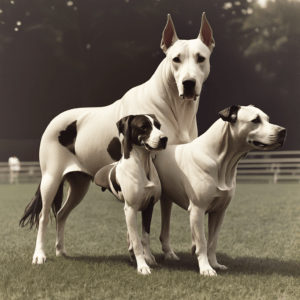Slow feeding bowls for puppies are you among the many pet owners who believe that slow feeding bowls are only necessary for adult dogs? Think again! Contrary to popular belief, slow feeding bowls can be incredibly beneficial for puppies as well. In this
comprehensive guide, we’ll debunk common myths and explore the wonders of slow feeding bowls tailored specifically for our youngest canine companions.
Understanding Slow Feeding Bowls
Before we dive into the benefits of slow feeding bowls for puppies, let’s take a moment to understand what they are and
they work. Slow feeding bowls, also known as puzzle or interactive bowls, are specially designed to regulate the pace at which dogs consume their meals.
Unlike traditional bowls that allow puppies to gulp down their food in a matter of seconds, slow feeding bowls
a more leisurely eating pace by presenting obstacles or barriers that puppies must navigate to access their food.
These innovative bowls come in various designs, including raised ridges, spirals, and maze-like patterns, all of which
serve to slow down your puppy’s eating speed and promote healthier mealtime habits.
By requiring your puppy to work for their food, slow feeding bowls engage their natural foraging instincts and provide
mental stimulation in addition to fulfilling their nutritional needs.

Types of Slow Feeding Bowls for Puppies
Now that we understand the benefits of slow feeding bowls for puppies, let’s delve into the different types available and
how they can cater to your furry friend’s unique needs.
Ceramic Slow Feeding Bowls
Ceramic slow feeding bowls are a popular choice for puppy parents looking for durable and easy-to-clean feeding solutions. These bowls often feature intricate designs and raised ridges that slow down your puppy’s eating pace while adding a touch of style to their mealtime routine.
“ceramic slow feeding bowls for puppies” and “ceramic puppy feeding dishes” highlight the versatility and practicality of these bowls.
Silicone Slow Feeding Bowls
Silicone slow feeding bowls offer flexibility and portability, making them ideal for on-the-go puppy parents or households with limited space. These collapsible bowls can be easily folded or rolled up for storage and are dishwasher safe for effortless cleaning.
“silicone slow feeding bowls for puppies” and “portable puppy feeding bowls” emphasize the convenience and versatility of this type of feeding solution.
Stainless Steel Slow Feeding Bowls
Stainless steel slow feeding bowls are prized for their durability, longevity, and hygienic properties. These bowls are
resistant to rust, corrosion, and bacterial growth, making them a safe and reliable choice for your puppy’s meals. Many stainless steel slow feeding bowls also feature non-slip bases to prevent spills and accidents during mealtime.
“stainless steel puppy feeding bowls” and “durable slow feeder bowls” highlight the practicality and reliability of this type of feeding dish.
Interactive Slow Feeding Bowls
Interactive slow feeding bowls take mealtime to the next level by engaging your puppy’s senses and encouraging active participation. These bowls often feature intricate maze-like designs or hidden compartments that require your puppy to use their paws or noses to access their food.
Not only do interactive slow feeding bowls slow down your puppy’s eating pace, but they also provide mental stimulation and enrichment, keeping your furry friend entertained and engaged.
“interactive slow feeding bowls for puppies” and “puzzle puppy feeding dishes” showcase the innovative and engaging nature of this type of feeding solution.

Features to Consider When Choosing a Slow Feeding Bowl
When selecting a slow feeding bowl for your puppy, there are several important factors to consider to ensure you
choose the right one for your furry friend’s needs. These include:
Size: Ensure the bowl is appropriately sized for your puppy’s breed and age.
Material: Choose a material that is durable, non-toxic, and easy to clean.
Design: Look for features like raised ridges, spirals, or maze-like patterns that slow down your puppy’s eating pace.
Stability: Opt for a bowl with a non-slip base to prevent spills and accidents during mealtime.
Ease of cleaning: Select a bowl that is dishwasher safe or easy to hand wash for convenience.
Benefits of Slow Feeding Bowls for Puppies
we’ll explore the numerous benefits that slow feeding bowls offer for the health, well-being, and happiness of your precious puppy.
Preventing Bloating and Digestive Issues
One of the most significant advantages of using a slow feeding bowl for your puppy is its ability to prevent bloating and
digestive issues. Puppies are notorious for their enthusiastic eating habits, often inhaling their food at lightning speed. This rapid consumption can lead to excessive air intake, which in turn can cause bloating, gas, and potentially life-threatening conditions like gastric torsion.
Slow feeding bowls help mitigate these risks by encouraging puppies to eat at a slower, more controlled pace, allowing them to chew their food thoroughly and reducing the likelihood of gastrointestinal distress “puppy bloating prevention”
and “digestive health for puppies” underscore the importance of this benefit.
Promoting Healthy Eating Habits
puppies can benefit from practicing mindful eating habits. By slowing down their eating pace and encouraging them to savor each bite, slow feeding bowls instill valuable lessons in portion control and moderation from a young age.
can help prevent overeating, obesity, and related health issues later in life. Additionally, by prolonging mealtime and
making the eating process more engaging, slow feeding bowls help satisfy your puppy’s natural instincts and prevent boredom-induced overeating.
Enhancing Mental Stimulation and Engagement
Mealtime shouldn’t just be about fueling your puppy’s body—it should also stimulate their mind and provide opportunities for enrichment. Slow feeding bowls transform mealtime into a fun and engaging puzzle-solving activity,
stimulating your puppy’s cognitive abilities and providing much-needed mental stimulation.
By requiring your puppy to work for their food, slow feeding bowls tap into their natural foraging instincts and provide a
rewarding and fulfilling eating experience.
mental engagement not only keeps your puppy entertained and occupied but also helps prevent behavioral issues like
boredom-induced destructive behavior or excessive barking. “puppy mental stimulation” and “interactive feeding for dogs” highlight the cognitive benefits of using slow feeding bowls.

Supporting Dental Health
Chewing is not only essential for slowing down your puppy’s eating pace but also for maintaining their dental health. Puppies who are fed slowly tend to chew their food more completely, which can help reduce plaque and tartar accumulation and support healthier gums and teeth.
Additionally, the textured surfaces of some slow feeding bowls provide an added dental benefit by gently scrubbing
your puppy’s teeth as they eat, further reducing the risk of dental issues like tooth decay or gum disease. E. Preventing Food Aggression
For puppies who tend to guard their food or exhibit aggressive behavior during mealtime, slow feeding bowls can be a
valuable tool for promoting peaceful dining experiences.
By slowing down the eating process and encouraging puppies to focus on the task at hand, these bowls help reduc the
likelihood of food-related conflicts and promote positive mealtime interactions.
Additionally, by prolonging mealtime and making the eating process more engaging, slow feeding bowls help distract puppies from potential triggers of food aggression, such as other pets or distractions in the environment. “food aggression prevention for puppies” and “peaceful mealtime for dogs” highlight the behavioral benefits of using slow feeding bowls.
How to Choose the Right Slow Feeding Bowl for Your Puppy
we’ll explore essential factors to consider when selecting the perfect slow feeding bowl for your furry friend, ensuring they enjoy mealtime to the fullest.
Factors to Consider When Selecting a Slow Feeding Bowl
Choosing the right slow feeding bowl for your puppy is crucial to ensure they reap the maximum benefits and enjoy a positive mealtime experience
Here are a few crucial elements to think about before choosing: Ensure the bowl is appropriately sized for your puppy’s breed and age. Opt for a bowl with a capacity that matches your puppy’s portion size to prevent overfeeding or underfeeding.
Material Select a material that is durable, non-toxic, and easy to clean. Stainless steel, ceramic, and silicone are
popular choices for slow feeding bowls, each offering its unique advantages in terms of durability and hygiene.
Design Look for features like raised ridges, spirals, or maze-like patterns that slow down your puppy’s eating pace and
promote healthy chewing habits. Consider the complexity of the design based on your puppy’s age, size, and level of activity.
Stability Opt for a bowl with a non-slip base to prevent spills and accidents during mealtime. A stable bowl will ensure
your puppy can focus on enjoying their meal without worrying about the bowl sliding or tipping over.
Ease of Cleaning Select a bowl that is dishwasher safe or easy to hand wash for convenience. Avoid bowls with intricate
designs or hard-to-reach crevices that may trap food particles and bacteria, posing a risk to your puppy’s health.

Tips for Introducing Your Puppy to a Slow Feeding Bowl
we’ll discuss practical tips and strategies to help you introduce your puppy to their new slow feeding bowl and ensure a
smooth transition.
Gradual Transition to Slow Feeding Bowls
When introducing your puppy to a slow feeding bowl, it’s essential to take a gradual approach to prevent any potential
stress or confusion. Start by incorporating the slow feeding bowl into your puppy’s mealtime routine gradually. Begin by
using the slow feeding bowl for one meal a day while continuing to use their regular bowl for the remaining meals. Over
time, gradually increase the frequency of using the slow feeding bowl until it becomes a permanent part of their
mealtime routine.
Encouraging Positive Associations with Mealtime
Make mealtime a positive and enjoyable experience for your puppy by associating their slow feeding bowl with tasty
and rewarding food. Use high-quality treats or a small portion of their favorite food to entice them to interact with the bowl. You can also add a sprinkle of their favorite treats or a dollop of peanut butter to the slow feeding bowl to make it
more enticing and rewarding for them.
Common Mistakes to Avoid When Using Slow Feeding Bowls
we’ll highlight common mistakes that puppy parents may make when using slow feeding bowls and provide actionable
tips to overcome them for a smoother mealtime experience.
Overfilling the Bowl
One common mistake puppy parents make when using slow feeding bowls is overfilling them with food. While it may be
tempting to fill the bowl to the brim to ensure your puppy gets enough to eat, doing so can defeat the purpose of the
slow feeding bowl and lead to frustration for your furry friend. Instead, follow the recommended portion sizes for your
puppy’s age, breed, and activity level, and only fill the bowl with enough food to cover the bottom surface. This will encourage your puppy to engage with the bowl and work for their food without becoming overwhelmed or frustrated.
Not Cleaning the Bowl Regularly
Another common mistake is neglecting to clean the slow feeding bowl regularly. Food particles and bacteria can
accumulate in the crevices and textured surfaces of the bowl, posing a risk to your puppy’s health and hygiene. To prevent contamination and ensure your puppy’s safety, make it a habit to clean their slow feeding bowl thoroughly after
each use. Use hot, soapy water and a bottle brush to scrub away any food residue and rinse the bowl thoroughly before
allowing it to air dry. Additionally, consider investing in a dishwasher-safe slow feeding bowl for added convenience and peace of mind.

Conclusion
In this final section, we’ll wrap up our comprehensive guide to slow feeding bowls for puppies and summarize the key
takeaways for puppy parents.
Recap of the Benefits of Slow Feeding Bowls
Throughout this guide, we’ve explored the numerous benefits that slow feeding bowls offer for puppies, including:
Preventing bloating and digestive issues
Promoting healthy eating habits
Enhancing mental stimulation and engagement
Supporting dental health
Preventing food aggression
By incorporating a slow feeding bowl into your puppy’s mealtime routine, you can provide them with a range of physical,
mental, and behavioral benefits that contribute to their overall health and well-being.
Encouragement to Incorporate Slow Feeding Bowls into Your Puppy’s Routine
We’ve also provided practical tips and strategies for selecting the right slow feeding bowl for your puppy, introducing
them to the bowl, and avoiding common mistakes when using it. By following these guidelines, you can ensure a smooth transition and a positive mealtime experience for your furry friend.












